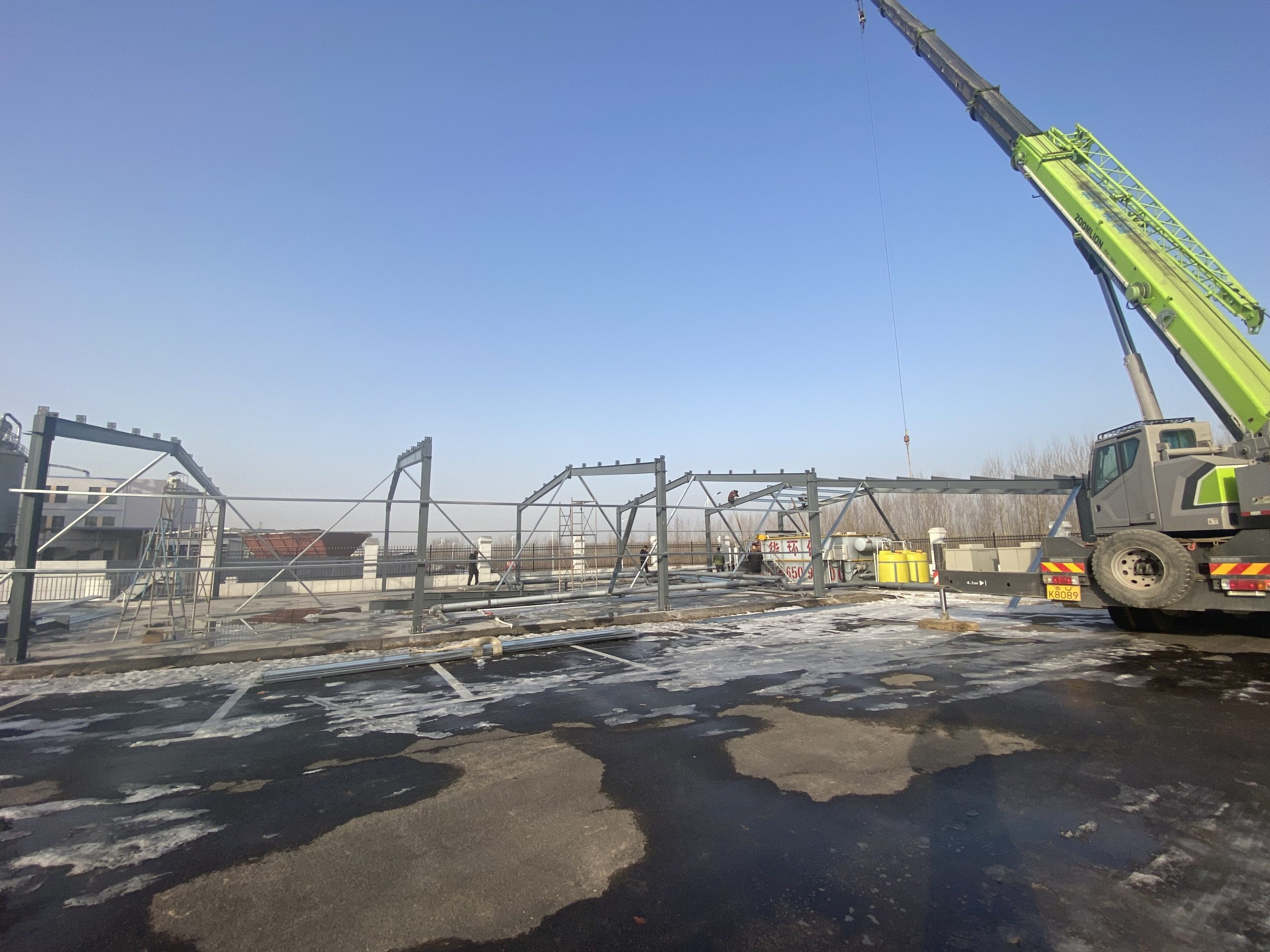Table of Contents
Benefits of Using Steel Structures in Urban Renewal Projects
Urban renewal projects are essential for revitalizing and rejuvenating cities, bringing new life to old and deteriorating structures. One key component of these projects is the use of steel structures, which offer a wide range of benefits that make them an ideal choice for urban renewal.
One of the primary advantages of using steel structures in urban renewal projects is their strength and durability. Steel is known for its high tensile strength, which allows it to withstand heavy loads and harsh weather conditions. This makes steel structures ideal for supporting large buildings and structures in urban areas, where space is often limited and buildings need to be constructed upwards rather than outwards.
In addition to their strength, steel structures are also highly versatile and can be customized to fit a wide range of architectural styles and designs. This flexibility allows architects and designers to create unique and innovative structures that enhance the aesthetic appeal of urban areas, while also meeting the functional requirements of the project.
Another key benefit of using steel structures in urban renewal projects is their speed of construction. Steel structures are prefabricated off-site and then assembled on-site, which significantly reduces construction time compared to traditional building methods. This not only helps to minimize disruption to the surrounding area during construction but also allows projects to be completed more quickly, saving time and money in the long run.
Furthermore, steel structures are also more sustainable and environmentally friendly than traditional building materials. Steel is a recyclable material, which means that it can be reused and repurposed at the end of its life cycle, reducing waste and minimizing the environmental impact of the project. Additionally, steel structures are energy-efficient and can be designed to maximize natural light and ventilation, reducing the need for artificial lighting and heating.
The use of steel structures in urban renewal projects also offers cost savings in the long term. While steel may have a higher upfront cost compared to other building materials, its durability and low maintenance requirements mean that it can provide significant savings over the life of the structure. Steel structures are resistant to corrosion, fire, and pests, which helps to reduce maintenance costs and prolong the lifespan of the building.
In conclusion, the application of steel structures in urban renewal projects offers a wide range of benefits that make them an ideal choice for revitalizing and rejuvenating cities. From their strength and durability to their versatility and sustainability, steel structures provide a cost-effective and efficient solution for creating modern and innovative structures in urban areas. By incorporating steel structures into urban renewal projects, cities can not only improve the aesthetic appeal of their built Environment but also create sustainable and resilient structures that will stand the test of time.
Case Studies of Successful Urban Renewal Projects Utilizing Steel Structures
Urban renewal projects are essential for revitalizing and rejuvenating cities, and the use of steel structures has become increasingly popular in these projects due to their durability, flexibility, and sustainability. Steel structures offer a wide range of benefits, including cost-effectiveness, speed of construction, and design versatility, making them an ideal choice for urban renewal projects.
One successful example of the application of steel structures in urban renewal projects is the High Line in New York City. The High Line is a 1.45-mile-long elevated linear park built on a former railway line on Manhattan’s West Side. The project transformed an abandoned and derelict railway into a vibrant public space that has become a popular destination for locals and tourists alike.
Steel was used extensively in the construction of the High Line due to its strength and flexibility. The steel framework allowed for the creation of unique and innovative designs, such as the park’s signature steel beams and columns that support the elevated walkway. The use of steel also enabled the project to be completed quickly and efficiently, minimizing disruption to the surrounding area.

Another successful urban renewal project that utilized steel structures is the Tate Modern in London. The Tate Modern is a contemporary art museum housed in a former power station on the banks of the River Thames. The building was renovated and expanded using a combination of steel and glass, creating a striking and modern architectural design.
Steel played a crucial role in the renovation of the Tate Modern, providing the structural support needed to transform the old power station into a world-class museum. The use of steel allowed for the creation of large open spaces and dramatic architectural features, such as the museum’s iconic Turbine Hall. The flexibility of steel also allowed for the incorporation of sustainable design elements, such as natural ventilation and daylighting, reducing the building’s environmental impact.
The success of these urban renewal projects demonstrates the effectiveness of steel structures in transforming and revitalizing urban spaces. Steel’s strength, durability, and versatility make it an ideal choice for projects that require innovative design solutions and sustainable construction practices. By incorporating steel structures into urban renewal projects, cities can create vibrant and dynamic spaces that enhance the quality of life for residents and visitors alike.
In conclusion, the application of steel structures in urban renewal projects has proven to be a successful and effective strategy for revitalizing cities and creating vibrant public spaces. The use of steel offers a wide range of benefits, including cost-effectiveness, speed of construction, and design versatility, making it an ideal choice for projects that require innovative design solutions and sustainable construction practices. By incorporating steel structures into urban renewal projects, cities can transform abandoned and derelict spaces into thriving and dynamic environments that enhance the quality of life for all.

